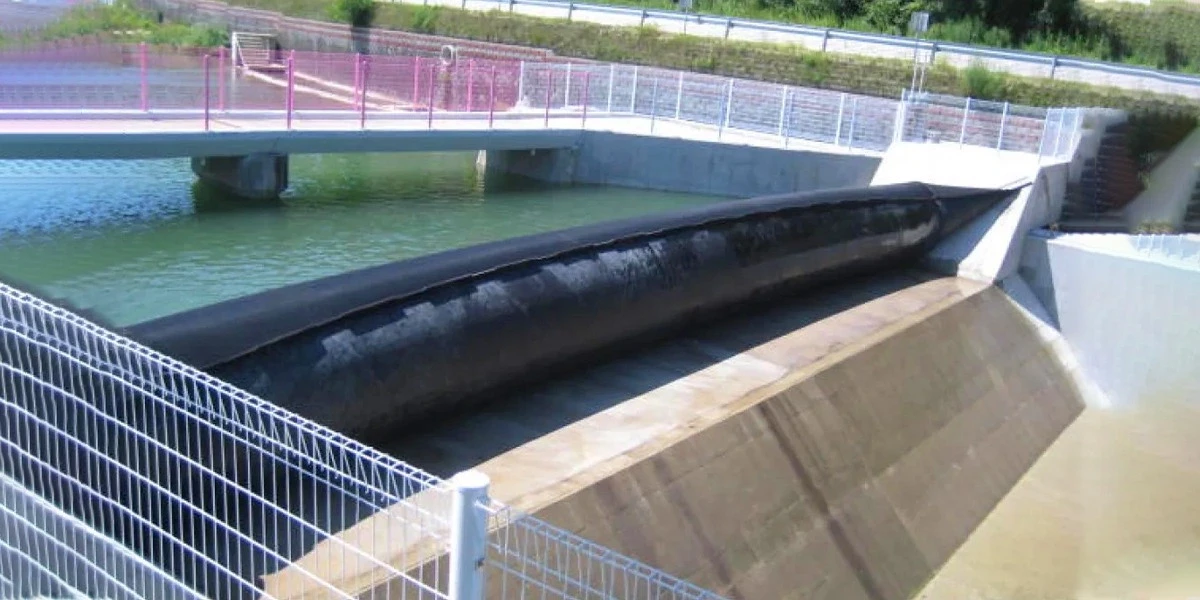

Known for its diverse landscapes and rich cultural heritage, India is currently facing a major crisis: water scarcity. Water scarcity is under severe stress due to the effects of climate change and our rapidly expanding population. Among these things, rivers are especially important because they are necessary for the survival of our society. However, they are also susceptible to water scarcity.
In the face of this challenge, the limitations of traditional water management methods are demonstrated. They often have shortcomings that do not diminish their efforts. Despite these challenges, however, there is hope. Alternatives such as rubber dams offer a bright future. The National Agricultural Innovation Programme (NAIP) has drawn attention to the global issue of water scarcity, highlighting the fact that India is not immune to it. Boutros Ghali's caution about turning water into a potential hot spot for future warfare is a sobering reminder of the importance of addressing this problem. Water is the base of serenity and development, not just a common matter substance. Unfortunately, much of this growing stress has been placed on the waterways. Pollution, uneven flows, and declining water levels threaten not only our water security but also the fragile ecosystems that depend on healthy rivers.
The environment is heavily influenced by traditional methods of river management, which include the construction of large, expensive concrete dams. They destroy naturally flowing rivers, harm aquatic life, and destroy ecosystems. In light of the title "What is rubber dam in river and its distinctiveness?" We need to look at alternative ways of managing water and understand its new layout and classification.
Let us know more about rubber dams and the great advances in river protection. According to the NAIP study, these have the potential to radically change how we protect our rivers.
Rubber dams have the following benefits for protecting our rivers:
Rubber dams can increase the amount of water used for agriculture, a major industry in India, by controlling water levels. They help mitigate the effects of unfavourable weather conditions by acting as a key flood control mechanism. Notably, the described rubber dam water system provides a continuous supply of fresh water for human consumption and the ecosystems on which it depends during the dry season.
Rubber dams are less expensive to build and maintain than conventional concrete dams. They are a reasonable option for small towns and geographically diverse areas in India due to their cost.
Rubber dams have a smaller environmental impact than their larger counterparts. By allowing the free movement of water and sediments, it does not interrupt important ecosystems, such as migrating fish. This commitment to sustainability is a natural fit for YOOIL Envirotech’s commitment to an environmentally friendly future.
Rubber dams are an effective tool that we can use in maintaining our protective waterways. Let’s use this creativity to improve the environment.
Rubber dams offer many benefits, but it is important to emphasise the importance of careful design and construction. The following are important points to consider:
The efficiency of a rubber dam greatly influences its installation. Factors such as embankment design, water quality, and the intended use of the dam must be carefully considered. YOOIL Envirotech’s expertise in water management can be of great help in this process.
Rubber dams need regular maintenance to function properly, just like any other infrastructure project. The development of appropriate maintenance programmes is essential to ensuring the longevity and efficiency of these dams.
Community support and involvement are essential for successful implementation. Every project must ensure equitable distribution of water and educate the public on the benefits of rubber dams.
YOOIL Envirotech recognises the urgent need to adopt long-term strategies for water treatment. Rubber dams are a viable technological solution that can ensure water security, protect our rivers, and promote sustainable development across India. We combine our expertise with new technologies like rubber dams to create future scenarios where our rivers stay green and provide universal water security.
YOOIL Envirotech’s air-filled rubber dams have completely changed the way dams are built and water is managed. These dams offer economically and environmentally friendly solutions consistent with engineering goals. Water management is used to prevent flooding and reduce water scarcity. YOOIL Envirotech is one of the promising and sophisticated dam construction contractors, providing guidance to assist in decision-making and promising to meet the changing requirements of its clients. Their landmark Chilwa Rubber Dam project in India is a testament to their skill and innovation. Rubber dams are more efficient than conventional steel gates as they last longer, require more time to construct, are less expensive, and have a larger expansion. Contact YOOIL Envirotech for Projects & Development India Ltd. award for outstanding work on this project. is now recognised by YOOIL Envirotech to support the laudable goal of water conservation.
